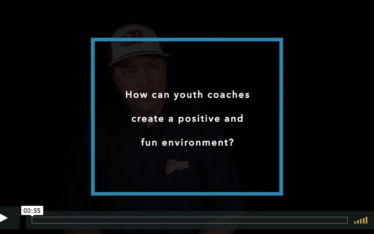HUMANeX Ventures: How Learning Styles Impact Coaching
The team at HUMANeX Ventures focuses on personal understanding and growth of intangibles and the mental side of sport. Consulting with teams from coast-to-coast, HUMANeX is recognized by ONE Softball as experts in the mental and cultural development aspects of sport, particularly softball.
It seems so often today in the world of sports that the ability to ensure an athlete understands the information they need to receive can be one of the most frustrating moments as a coach.
Elite leaders and coaches across the country have one common discussion point: how to more effectively use the time they have in working with pupils of various types. Many coaches speak of the time, money and other resources invested in coaching athletes to create the most impact, but when asked how each athlete learns best, they often simply cannot respond.
Having a clear understanding of athletes’ learning styles: auditory, visual, or kinesthetic, is a large piece of information that is often missing from coaches’ understanding. Let’s take a closer look at why understanding learning styles from a coach’s standpoint is important, and a few tricks to tap into each preferred learning styles with athletes.
Three Reasons Learning Style is Important:
- Ensure information is received most effectively for long term learning and growth.
- Keep athletes engaged and learning for longer periods of time.
- Creates a more effective use of time in training and teaching with a specific approach.
How to Coach for Learning Style: (e.g. College Baseball Team’s Learning Styles)
In this example provided, Kinesthetic and Visual learning styles are dominant. An important note is that even in teammates who interact regularly in competition looking at pitchers and catchers, the top learning style is actually different. Pitchers on this team are higher in visual learning, whereas catchers are kinesthetic learners. Based on this insight, how a coach guides and develops these individuals will vary based on how they most effectively learn. While they must work together, they learn differently. Below we will discuss some approaches based on the dominant learning style.
Tips & Tricks for coaching based on dominant learning style:
Auditory:
- Utilize one-on-one coaching moments with clear conversation.
- Repeat what you are asking of athletes so they can hear it clearly more than once.
Visual:
- Create visual goals that can be seen regularly to help athletes stay focused on objectives.
- Show athletes film or pictures of what you are trying to teach them.
Kinesthetic:
- Physically walk athletes through instruction (plays, schemes, techniques).
- Allow athletes to stand up in meetings or discussion.
Putting a focus on the learning styles of athletes can allow for not only easier instruction, but help ensure the information is retained and utilized long term. Once you identify how an athlete learns, use the tips suggested to better engage their growth and development.
If you’re interested in finding out your Learning Preference, take this Sensory Preference Inventory (SPI), (SPI), a free assessment tool from HUMANeX Ventures, available to ONE Softball readers.
 CLICK HERE to take the Sensory Preference Inventory (SPI)
CLICK HERE to take the Sensory Preference Inventory (SPI)




About The Author
HUMANeX Ventures
The team at HUMANeX Ventures focuses on personal understanding and growth of intangibles and the mental side of sport. Consulting with teams from coast-to-coast, HUMANeX is recognized by ONE Softball as experts in the mental and cultural development aspects of sport, particularly softball. Among the mission of the company is to help coaches, athletes, and teams reach their full potential through study and self-assessment of aspects of sports not always visible.